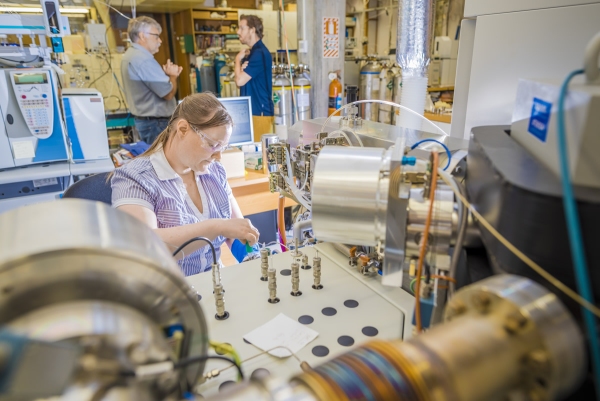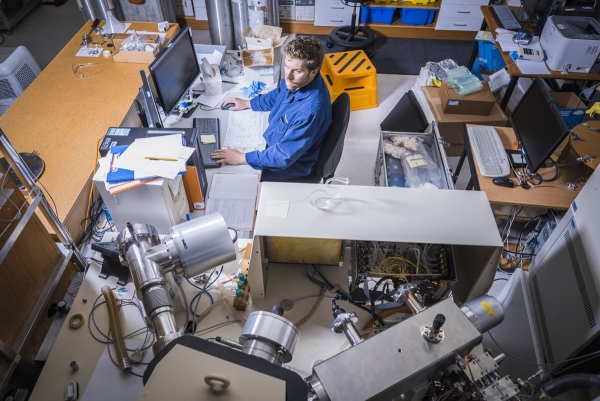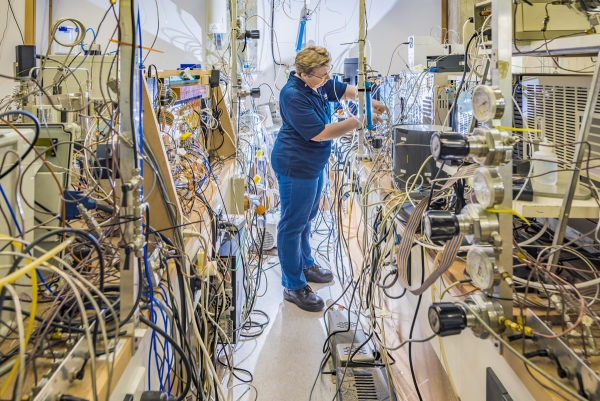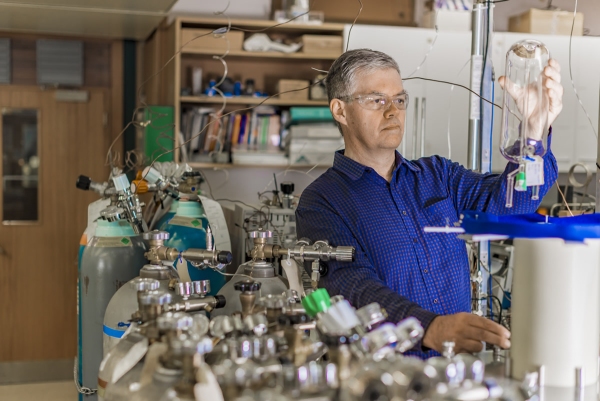NIWA operates Thermo Scientific MAT252 and MAT253 isotope ratio mass spectrometers in a purpose-built laboratory at Greta Point, Wellington. These instruments are fitted with both continuous flow and dual inlet systems and have been modified to provide precise analyses for various aspects of the environmental research undertaken by NIWA and its clients. In particular, modifications have been made to enable high-precision determinations of δ13C in the atmospheric greenhouse gases, carbon dioxide (CO2) and methane (CH4), as well as the trace gas carbon monoxide (CO). These data have been widely used in studies of the source structure of the gases as well as models examining global climate change.
Carbon dioxide is currently increasing in the atmosphere. While precise concentration measurements allow us to track this increase, it is stable isotopes that allow us to observe how the composition of the atmospheric CO2 is changing. The CO2 analyses involve the online separation of whole air on a chromatographic column, before measurement in a continuous flow mode. These analyses provide both δ13C and δ18O, with precisions of 0.02‰ and 0.04‰ respectively.
Methane is the second most important greenhouse gas. Research into the stable carbon isotope seasonality and variability provides insight into methane sources, atmospheric processes and transport. Methane isotope analyses at NIWA involve either off-line preparation for high precision, or are made on-line for small samples. The high precision analyses are aimed at resolving the small seasonal cycle (about 0.2 ‰) observed at southern mid-latitudes. Our off-line preparation achieves repeatability of better than 0.02‰ since the early 1990s. Scientific findings, based on this time series, include the characterisation of a previously unknown methane sink, and a recent shift in global methane sources from fossil fuels to wetlands or agriculture.
The study of paleo-atmospheres using ice cores is constrained by very small sample sizes. For this reason the continuous flow Isoprime is fitted with a pre-concentration and combustion interface, allowing δ13CH4 analyses to be made on a kilogram of ice.
Publications
Related greenhouse gas publications.





